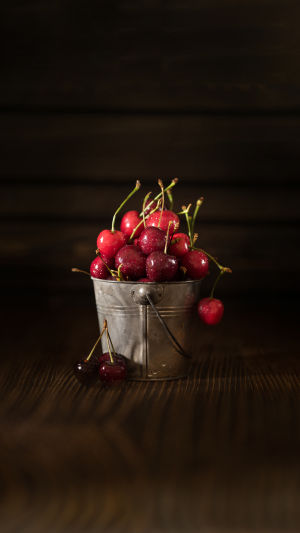Hey Lykkers! Have you ever bitten into a juicy cherry and felt an instant rush of sweetness?
Today, we're diving into the delightful world of cherries and exploring their fascinating story, from their ancient origins to their place in our kitchens. Join us as we uncover how to choose the best cherries for your next culinary adventure!
<h3>A Brief History of Cherries</h3>
Cherries have a rich history that dates back thousands of years. Originating in the regions around the Black Sea and the Caspian Sea, they were cultivated as early as 3000 BC. These delightful fruits spread across Europe and Asia, becoming a beloved treat in various cultures. Ancient Greeks and Romans enjoyed cherries not just for their taste but also for their medicinal properties, believing they could alleviate ailments and promote health.
As cherries made their way to the Americas in the 1600s, they quickly became a staple in many households. Today, we celebrate cherries for their versatility in cooking, baking, and snacking, making them a favorite fruit across the globe.
<h3>How to Choose the Best Cherries</h3>
When it comes to selecting cherries, there are a few key factors to keep in mind to ensure we pick the best ones available. First, we should look for cherries that are deeply colored and have a shiny appearance. The color can vary depending on the variety, but generally, darker cherries indicate ripeness and sweetness.
Next, we should check for firmness. Gently squeeze a cherry; it should feel firm but not hard. If it’s too soft or has any blemishes, it might be overripe or spoiled. The stem should also be green and pliable, indicating that the cherry was recently harvested. If the stem is dry or brown, it could suggest that the fruit is older.
Another important factor is the size. Generally, larger cherries tend to be sweeter, but this can vary by variety. Don’t hesitate to ask your local market or farmer about the varieties available, as some are known for their exceptional sweetness while others might have a tart flavor.
Lastly, smell is a great indicator of ripeness. Ripe cherries will have a sweet, fruity aroma, which can entice us even before we take a bite.
The History of Cherries | Traverse City
Video by Traverse City Tourism
<h3>Storage and Enjoyment</h3>
Once we've chosen the perfect cherries, it’s essential to store them properly to maintain their freshness. We should keep cherries in the refrigerator, preferably unwashed, as moisture can cause them to spoil faster. When ready to enjoy, rinse them gently under cold water and remove the stems.
Cherries can be enjoyed in countless ways! We can snack on them fresh, toss them in salads, or use them in various desserts like pies, tarts, and cobblers. Their natural sweetness also makes them a delightful addition to smoothies or as a topping for yogurt and oatmeal.
Cherries are more than just a delicious fruit; they carry a rich history and offer a burst of flavor in every bite. By choosing the best cherries, we can elevate our culinary creations and enjoy the sweet taste of summer all year round. So, let’s head to the market, pick some ripe cherries, and savor their delightful sweetness together!





